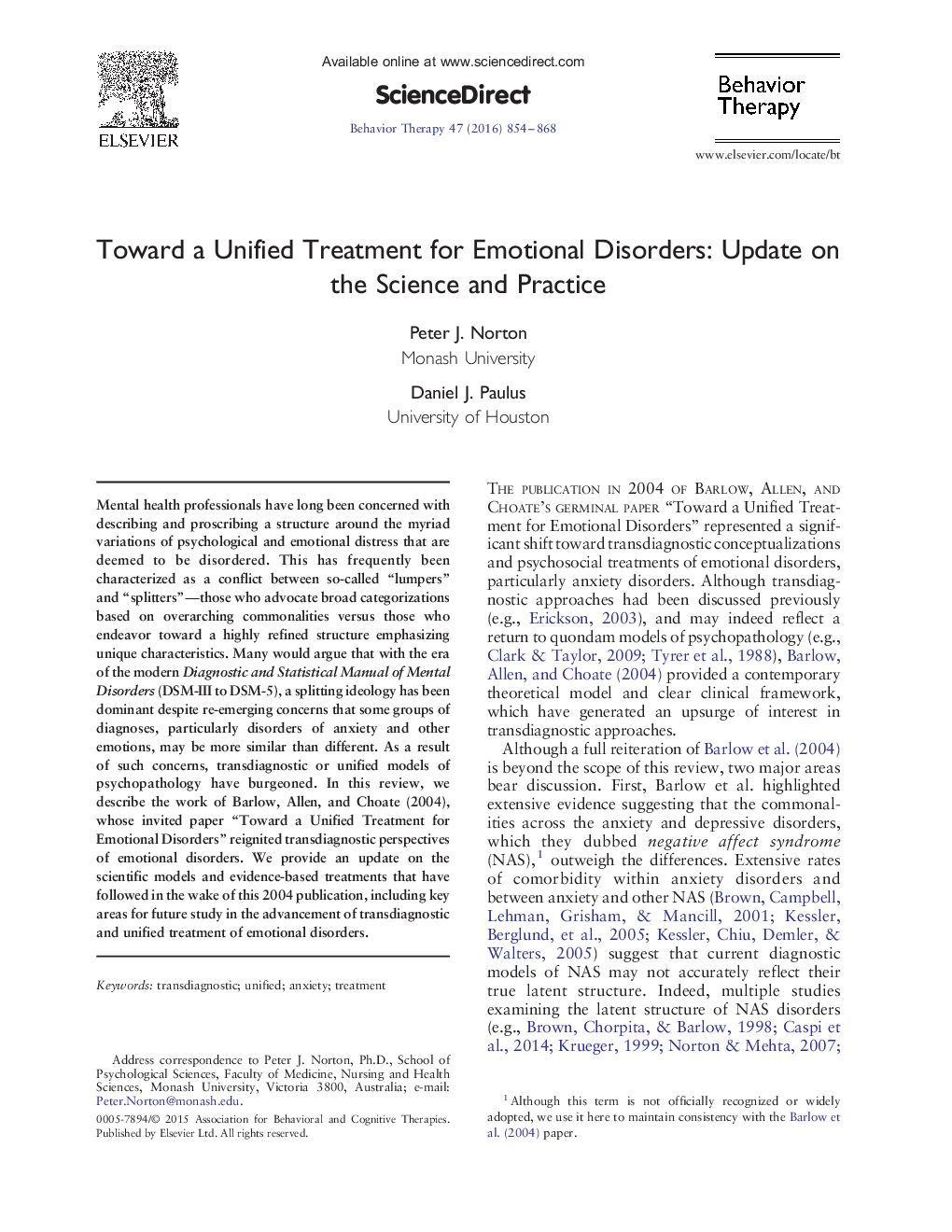| Article ID | Journal | Published Year | Pages | File Type |
|---|---|---|---|---|
| 5038003 | Behavior Therapy | 2016 | 15 Pages |
â¢Provides a review and update on Barlow, Allen, and Choate (2004)â¢Reviews and updates transdiagnostic models of Negative Affect Syndromes (NAS)â¢Presents recent data on transdiagnostic and unified treatments for anxiety and NASâ¢Discusses key future research directions for both transdiagnostic models and interventions.
Mental health professionals have long been concerned with describing and proscribing a structure around the myriad variations of psychological and emotional distress that are deemed to be disordered. This has frequently been characterized as a conflict between so-called “lumpers” and “splitters”-those who advocate broad categorizations based on overarching commonalities versus those who endeavor toward a highly refined structure emphasizing unique characteristics. Many would argue that with the era of the modern Diagnostic and Statistical Manual of Mental Disorders (DSM-III to DSM-5), a splitting ideology has been dominant despite re-emerging concerns that some groups of diagnoses, particularly disorders of anxiety and other emotions, may be more similar than different. As a result of such concerns, transdiagnostic or unified models of psychopathology have burgeoned. In this review, we describe the work of Barlow, Allen, and Choate (2004), whose invited paper “Toward a Unified Treatment for Emotional Disorders” reignited transdiagnostic perspectives of emotional disorders. We provide an update on the scientific models and evidence-based treatments that have followed in the wake of this 2004 publication, including key areas for future study in the advancement of transdiagnostic and unified treatment of emotional disorders.
